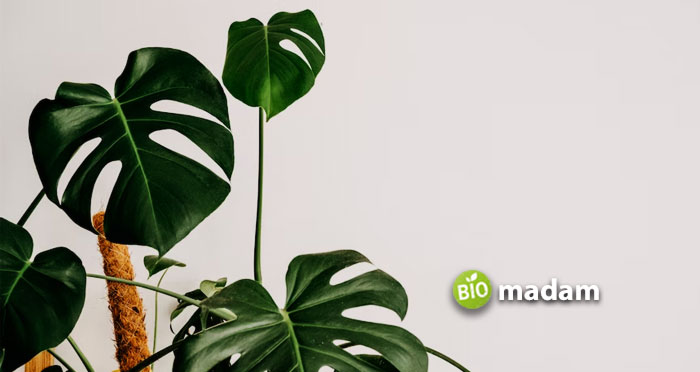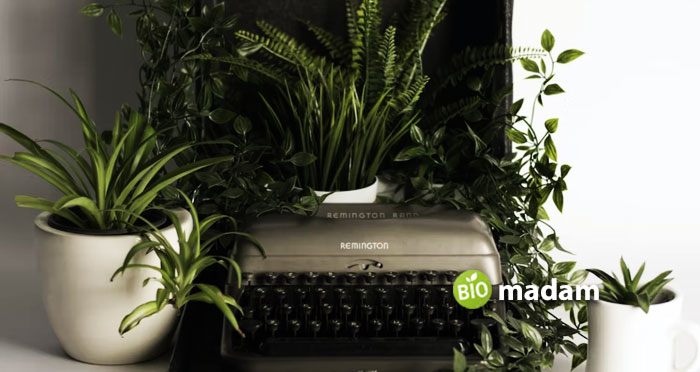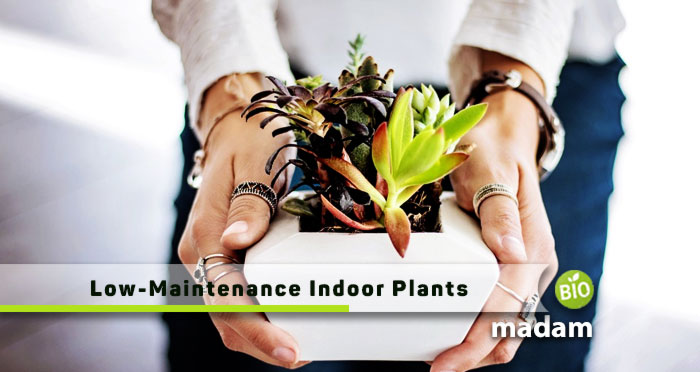The lovely exchange that occurs when caring for indoor plants is one of the finest parts of it. Plants rely on you to provide care, and in return, they provide you with benefits like cleaner air and a more aesthetically pleasing environment. As they expand and bloom, plants represent optimism and can serve as a powerful symbol of what lies ahead. Focus, stress, and depression are all helped by having plants in the home. Here are some of the low-maintenance indoor plants that will leave your space looking lovely.
Monstera

The large and brash Monstera deliciosa often called the “split-leaf philodendron,” is a native of the Central American rainforests. The “wow” effect of this easy-to-grow climbing evergreen makes it a popular choice for many designer environments. In a controlled environment, the plant can add a few feet to its height every year. It can thrive in the right humidity and temperature. It may thrive in a cold environment, but the minimum temperature for a Monstera is 50 degrees or 10 Fahrenheit. You should also bring the Monstera close to a sunny window for it to receive indirect sunlight. Its huge, heart-shaped leaves are split down the middle and naturally glossy.
The plant’s stems and different types of leaves, which can reach lengths of several feet, are supported by complicated aerial roots that emerge from the soil. Outside, in the correct climate, at any time of year, you may expect tannish cream blossoms, pollinated by bees, and luscious fruit with a flavor profile that combines pineapple and banana. However, indoor plants rarely bear fruit.
Snake Plant
The snake plant is native to parts of Asia and Africa but has become a popular houseplant. It is recognizable by the evergreen leaves that have the appearance of a sword and grow in an upright position. These leaves nearly look like artificial foliage. Snake plants are frequently utilized in interior design because they are aesthetically beautiful, simple to maintain, and can live with only a small amount of water. The snake plant is a hardy succulent that may grow anywhere from a few inches to several feet in height. Its popular name comes from its resemblance to a snake. Snake plants, like many other types of houseplants succulents, can help clean the air inside your home.
One of the things that makes this plant so special is the fact that it is one of the very few plants that can transform carbon dioxide into oxygen when it is still night. It is a good plant for use as decor in the bedroom because it can assist maintains healthy airflow.
Spider Plants
Rosettes of tall, narrow, arching foliage can be produced by spider plants. This foliage can be a pure green color or white and green stripes. These low-maintenance houseplants are a sight to behold when displayed in a hanging basket. Some spider plants bloom with tiny white flowers on long stems during the summer months, and others generate offsets, sometimes known as “pups”, that bloom the following year.
The name of the plant comes from the fact that the young appear like spiders. Plants need indirect sunlight, but not too much. To avoid leaf burn and discoloration, spider plants should be kept out of strong, midday sun.
It is possible for a healthy spider plant to produce “pups,” which are small branches that can be separated from the mother plant and replanted to grow additional spider plants. Pups should be left on the mother plant until they are around two inches in diameter for optimal results.
Pothos
Even if you are the type of person who tends to forget to water their houseplants on a regular basis, you should still be able to successfully cultivate a pothos plant. A pothos makes an excellent houseplant throughout the year since it grows swiftly, typically adding some inches to its length in only one month. Pothos vines are not like ivy in that they will naturally attach themselves to trellises and other supports; however, they can be taught onto supports to give the appearance that they are twining.
If you want your pothos to develop into a long vine, you can train it along walls and over window frames by securing it to hooks and allowing it to grow freely. If you want to prevent your vines from becoming a tangled mess, shake them loose every once in a while. Vines that are allowed to develop on their own can become highly tangled.
Tradescantia Zebrina

Tradescantia zebrina, also known as the zebra plant, or the wandering dude, is a member of the spiderwort family that is planted for its attractive variegated leaf. T. fluminensis is visually similar to the zebra plant but has solid green leaves instead of the visually appealing stripes found on the zebra plant. Here’s a plant for all you would-be gardeners out there! It is extremely hardy and can survive in virtually any indoor space setting.
This low-growing plant can cover some inches of the ground. Its leaves are oval to clasp the succulent stems. The upper side of the leaf is a variegated green and purple with two broad, silvery white bands, while the underside is a consistently deep magenta. Careful inspection reveals tiny hairs along the leaf’s edges, and the surfaces appear to shimmer in the sun.
However, in more southern latitudes, the sun’s rays can bleach away the hues, even though they appear brightest here in full sunlight. Stems shed their lower leaves, and their leaves become drab and uncolored when there is not enough light. The stems will send off new shoots or take root at the nodes, while the flowering tips will grow upward.
The numerous ways in which houseplants enhance health and well-being suggest that indoor gardening may continue for longer than most. Incredible what a stroll across the park can do for your mood when you’re feeling gloomy. Spending time in the great outdoors is beneficial to health. There are a few different ways in which indoor plants can enhance the quality of indoor air.
Plants raise relative humidity by releasing water vapor into the air via transpiration and evapotranspiration, in addition to absorbing carbon dioxide during photosynthesis. Plants will not degrade the quality of air indoors; on the contrary, they can increase it, albeit marginally; and their other benefits are just as amazing.

Hi, they call me Jenna, and I am also known for achieving a gold medal during my Ph.D. in science life. I always had a dream to educate people through my utmost writing hobby. So, I chose this blogging path, and Biomadam gave me this opportunity to present for them. I now stand to entertain you. Continue reading my articles & discuss if you’ve any confusion through the comment section below.

